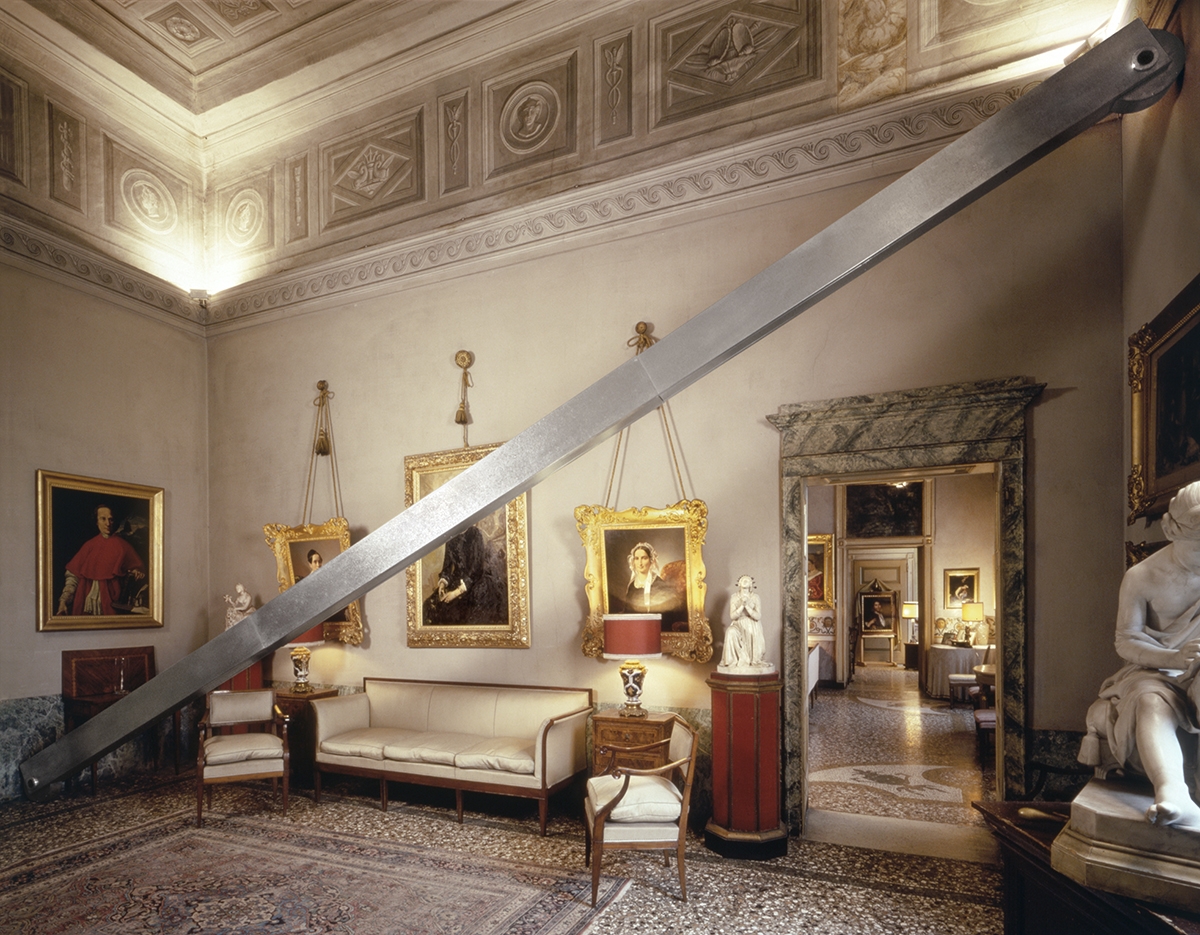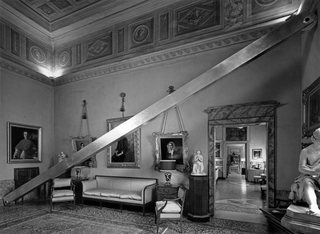Private collection, Milan
Art and frame
di Vittoria Coen
(...) Umberto Cavenago builds two galvanized steel beams, the first of which is placed along the staircase following the course of the steps, the second diagonally crosses one of the rooms joining vertically two opposite corners.
While in other works the non-sense of the title in the obvious contradiction with the unreliable structure of the object appeared clearly, here the proposed idea of support, recurrent in Cavenago's research, more than being affirmed and at the same time denied by the irony of the contrasting element (the unstable wheels) is in fact refuted by its very uselessness.
Rather, the installation finds its reason for existence in a curious relationship, of compliance with the scale, for example, and thus of harmony with the environment, and of a different proposal, which in one case alludes to a coincidence of reconcilable geometric opposites, in the other it outlines a particular variant of architectural design deliberately contained but clearly projected.
The linearity of the cut creates an effective displacement effect that never conflicts with space.
Beams and telescopes
From a static point of view, in the structural element “beams”, the tie points are strategic.
In the case of Cavenago’s “beams”, two wheels are mounted at the ends of the artifact to free the element from staticity.
The beams adapt to the space hosting them by connecting their extreme points, most often transversally, as in the installation in one of the rooms on the main floor of Palazzo Moroni, an ancient historical residence in the heart of Città Alta in Bergamo, where, among the precious furnishings and paintings in the collection, two opposite points in the room were connected by the work.
Unlike the “beams”, which have fixed dimensions designed for the exhibition space, the “Telescopici”, as mechanical devices, are composed of elements that slide into one another: a system of variable dimensions.
The result is a device that adapts from time to time to the space that contains it, the same work with its versatility can be installed in different spaces simply by adjusting the length.

Installation at Palazzo Moroni, Bergamo
Photo © Studio BluPrivate collection, Milan
Art and frame
di Vittoria Coen
(...) Umberto Cavenago builds two galvanized steel beams, the first of which is placed along the staircase following the course of the steps, the second diagonally crosses one of the rooms joining vertically two opposite corners.
While in other works the non-sense of the title in the obvious contradiction with the unreliable structure of the object appeared clearly, here the proposed idea of support, recurrent in Cavenago's research, more than being affirmed and at the same time denied by the irony of the contrasting element (the unstable wheels) is in fact refuted by its very uselessness.
Rather, the installation finds its reason for existence in a curious relationship, of compliance with the scale, for example, and thus of harmony with the environment, and of a different proposal, which in one case alludes to a coincidence of reconcilable geometric opposites, in the other it outlines a particular variant of architectural design deliberately contained but clearly projected.
The linearity of the cut creates an effective displacement effect that never conflicts with space.
Beams and telescopes
From a static point of view, in the structural element “beams”, the tie points are strategic.
In the case of Cavenago’s “beams”, two wheels are mounted at the ends of the artifact to free the element from staticity.
The beams adapt to the space hosting them by connecting their extreme points, most often transversally, as in the installation in one of the rooms on the main floor of Palazzo Moroni, an ancient historical residence in the heart of Città Alta in Bergamo, where, among the precious furnishings and paintings in the collection, two opposite points in the room were connected by the work.
Unlike the “beams”, which have fixed dimensions designed for the exhibition space, the “Telescopici”, as mechanical devices, are composed of elements that slide into one another: a system of variable dimensions.
The result is a device that adapts from time to time to the space that contains it, the same work with its versatility can be installed in different spaces simply by adjusting the length.

Social
Contatti
umberto@cavenago.info